Saturday, January 14, 2006
Stalking the giant collembola
So it appears I was correct when I suggested the posting rate around here might dry up a little while I was working on my summer fellowship. The combination of long working days, warm summer evenings and limited computers in the lab aren’t exactly conducive to blogging. However, today I have some time and a computer so I thought I’d share a few pictures and a few stories from a recent trip aimed at collecting more samples for my research.
My project deals with New Zealand’s native Giant Collembola. The collembolans are a very successful group of animals that were once considered insects but have since been reclassified as a Class unto themselves (the sister taxon to insecta) follwing the discovery of a 400 million year fossil collembola. It has even been suggested that the collembolans parted ways with the ancestors of the modern insects even before the lineage that would go on to give rise to modern crustaceans like crabs and woodlice did. Collembola tend to make their living in leaf litter, soil and decaying logs where they play an important role in braking down organic materials and forming new, nutrient rich soils that allow forests to keep growing. The giants (they grow up to ~20mm where few others approach 5mm) appear to be adapted to southern beech forests so while I was in the Wairarapa over the New Year’s break I headed to the beech forest at Holdsworth in the Tararua forest park.

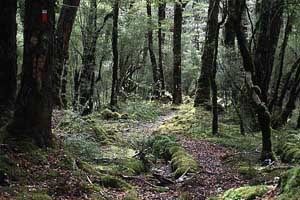
Collembola country: New Zealand beech forest
As it turns out the closest I got to finding giants was a couple of collembola that I think are from the same Family but are of no use to my study. Still, collembola hunting means getting into the forest and tuning over some logs and that always results in interesting finds. And in fact about 200 metres into the bush I came across the an astelia in flower.
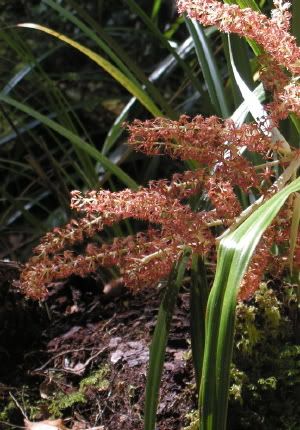
I’m no botanist but I can tell you the astelia are a group of monocots from the lily family that are found throughout the pacific. This one is probably Astelia nervosa which is fairly common in New Zealand. The pretty pretty little red flowers will give way to yellow fruits by the end of summer. But as I said I’m not botanist so I left the astelia an went in search of some animals. About 40 mins of bushwhacking turned up little besides ant colonies and introduced wasps so I decided to rejoin the track and head up a little higher. I found a nice wet gully that seemed likely to have rotting logs but before I could get down into it I was stopped by a great cracking noise. I turned round to see the source of the noise anf actually cowered when I first laid eyes on it. Once i regained some semblnace of compusure, took my hands away from my face, straightened my back and even opened my eyes I saw the noise had come from this rather beautiful fellow beating his wings
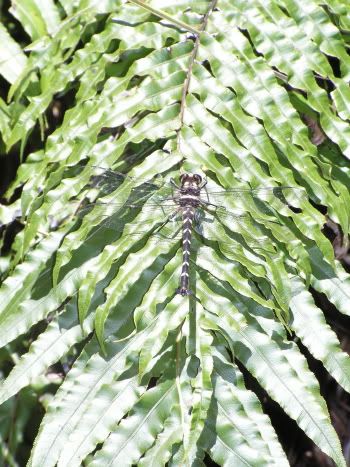


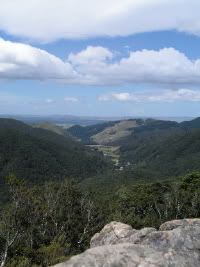
I continued to not find Giant Collembola all the way down but did run into one more intersting thing. Most of New Zealand's land snails suffer from not being as cool as the powelliphanta. Who can compete with huge, beautiful, carnivourous, gondwanan relics? Still, i thought the lazy, koru like helix and the banded pattern on this shell were quite pretty so i took the photo opportunity:
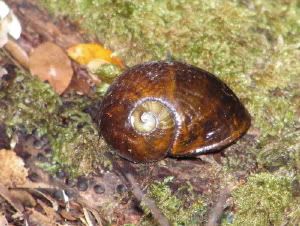
And that was it. About 4 hours spent hopping around in leaf litter, pulling up logs and generally scaring and confusing trampers which poduced nothing of any use to my project. A really very enjoyable failure.
3 Comments:
Those Uropetala are spectacular animals. Lots in the Ruahine (near me) at the moment. Sometimes they'll actually land on you, which is always a buzz. Fortunately they seem to consider you a mobile perch rather than the mother of all meals.
Good to see another NZ blog dealing with these sorts of things. For some reason I can't fathom, there seem to be few around.











